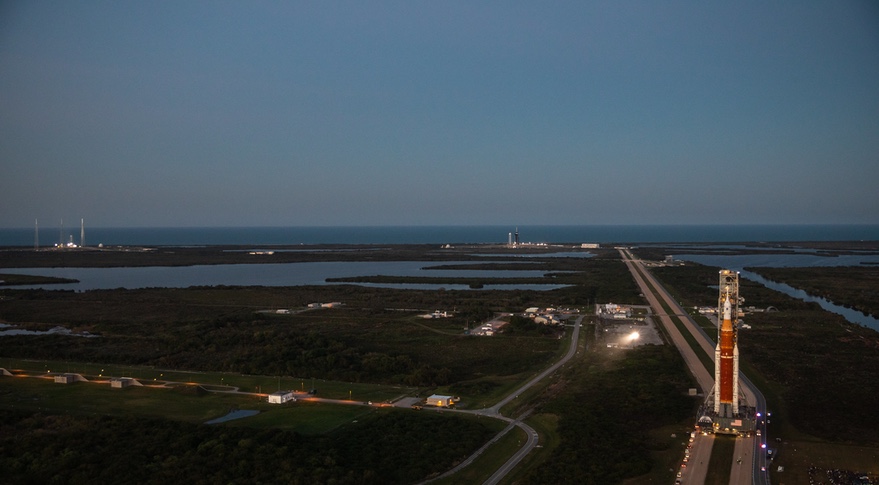WASHINGTON — NASA has tentatively scheduled the next attempt to fuel the Space Launch System and go through a practice countdown for June 19, two weeks after the vehicle returns to the launch pad.
At a May 27 briefing, NASA officials said they were wrapping up work on the rocket in the Vehicle Assembly Building at the Kennedy Space Center. The rocket returned to the VAB a month ago after three attempts to complete a wet dress rehearsal (WDR) at Launch Complex 39B in the first half of April.
Cliff Lanham, senior vehicle operations manager for NASA’s Exploration Ground Systems program, said a “call to stations” for the rollout is scheduled for the evening of June 5. The rollout will start at around midnight Eastern June 6. That is about six hours later than the first rollout in March, which he said is intended to make it less likely thunderstorms will interfere with the rollout.
That would set NASA up to make its fourth WDR attempt no earlier than June 19, depending on weather and any potential range constraints, he said.
NASA hopes this fourth attempt will be successful, filling both the core stage and the upper stage with liquid hydrogen and liquid oxygen propellants and going through a countdown that stops just before the core stage’s engines would ignite. However, Tom Whitmeyer, deputy associate administrator for common exploration systems development, said the agency will “add a little schedule this time around to make sure if we have to do more than one wet dress rehearsal attempt, we’re ready to support that.”
Whitmeyer and Lanham said they felt confident workers had fixed the problems experienced during the April WDR attempts, including replacing a helium check valve in the upper stage and tightening flange bolts on an umbilical believed to be the source of a hydrogen leak. “All the things we’ve seen so far have been very positive in terms of the actual performance of the hardware,” Whitmeyer said.
While the SLS was back in the VAB, Air Liquide, the contractor that runs the nitrogen gas distribution system at the center, completed an upgrade to increase the amount of gas available for SLS operations, an issue that cropped up during the earlier WDR attempts. That upgraded system completed a 34-hour test that exceeded the requirements for SLS, said John Blevins, NASA SLS chief engineer.
NASA also used the vehicle’s time to perform some work that was scheduled for after the WDR. That included opening up the Orion spacecraft and installing some of the payloads it will carry on the uncrewed Artemis 1 mission and removing instrumentation on the SLS used to measure the loads on it during the first rollout.
Thar work, Lanham said, “will really help us from the standpoint of the volume of work” that will need to be done after WDR to get the vehicle ready for launch. He didn’t give an estimate of how much time NASA saved by doing that work early, but noted doing it now avoided delays from “nonconformances” technicians encountered.
“It allows us to lessen the demand on our resources when we do get back in the VAB and, I feel, lessen the risk on our overall schedule for rolling back out for launch,” he said.
Agency officials have previously stated they will wait until after the WDR is complete to set a formal launch date for Artemis 1, but Whitmeyer reiterated recent statements by officials, including NASA Administrator Bill Nelson, that NASA hopes to launch the mission in August. NASA has published launch windows for the mission of July 26 through Aug. 10, excluding Aug. 1, 2 and 6, as well as Aug. 23 through Sept. 6, excluding Aug. 30, 31 and Sept. 1.
